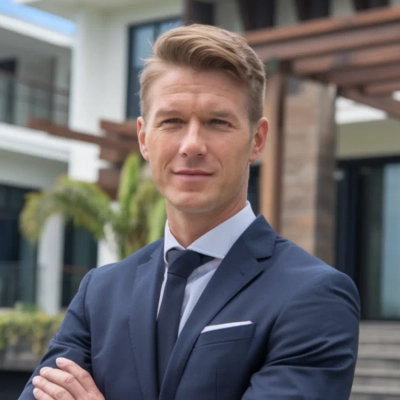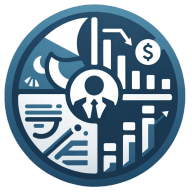How Do You Ensure a Client's Investment Portfolio Aligns With their Long-Term Goals?
Delineating the path to financial security through investment portfolios requires more than mere guesswork; it demands the precision of expert advice. This article distills the wisdom of seasoned professionals who navigate the complex terrain of long-term financial planning. Discover strategies that harmonize investment decisions with future aspirations, ensuring every dollar is a step towards realizing enduring objectives.
- Understand Financial Objectives and Risk Tolerance
- Tailor Strategy for Homeownership and Retirement
- Diversify with Real Estate Investments
- Set Strategic Asset Allocation
- Balance Investments for Property and Retirement
- Use a Systematic Process
- Employ Lifecycle Mapping Framework
- Conduct Thorough Risk Assessment
- Craft Customized Diversified Strategy
- Apply Three-Horizon Framework for Startups
Understand Financial Objectives and Risk Tolerance
To make sure a client's investment portfolio matches their long-term goals, I start by understanding their financial objectives and risk tolerance. I then build a diversified portfolio that fits these criteria. Regular check-ins and adjustments keep everything on track. Open communication ensures we're always aligned with their goals.
For example, if a client wants to retire in 20 years, I might recommend a mix of stocks and bonds that balances growth and stability, adjusting as needed based on market conditions and their evolving needs.
Tailor Strategy for Homeownership and Retirement
Ensuring a client's investment portfolio aligns with their long-term goals begins with understanding their financial aspirations, risk tolerance, and time horizon. For example, if a client is working toward homeownership, we assess their current savings, income, and credit profile to develop a tailored strategy that balances liquidity for a down payment with longer-term investment growth. We might recommend reallocating certain high-risk investments into more stable, income-generating assets to preserve capital for immediate goals, like purchasing a home, while still contributing to their retirement or wealth-building objectives. Through regular portfolio reviews and open communication, we adapt their strategy as their life circumstances and market conditions evolve, ensuring every financial decision supports their overarching vision.
Diversify with Real Estate Investments
My primary responsibility is to ensure my client's investment portfolio aligns seamlessly with their long-term objectives. This requires a deep understanding of their financial goals and crafting a tailored strategy to help them achieve lasting success.
For example, I had a client who was looking to diversify their investment portfolio by adding real estate investments. They were specifically interested in rental properties as they wanted to generate passive income for their retirement years. After discussing their long-term goals and risk tolerance, we decided on investing in multi-family properties in up-and-coming neighborhoods.
To further align the investment with their long-term goals, we also discussed the importance of property management and finding reliable tenants. I assisted them in finding a reputable property management company and helped them with tenant screening to ensure that their investment would continue to generate income in the long run.
Additionally, I provided my client with market research and projections for the potential growth of the areas we were considering. This allowed them to make an informed decision and feel confident in their investment choice.

Set Strategic Asset Allocation
As a financial professional, I always start by taking a comprehensive look at my client's portfolio and their investment objectives. It is a priority to understand their time horizon and set strategic asset allocation for them. Within precious metal investing, it's important that I keep a sharp eye on market volatility and risk tolerance. Diversification of a client's investment portfolio is a top priority for me; it is important to have investments across gold, silver, platinum, and palladium. By taking these steps, I build and earn trust to ensure proper alignment of their investment portfolio.

Balance Investments for Property and Retirement
I always start by having a detailed conversation about their financial aspirations, risk tolerance, and time horizon. It's important to fully understand what they're aiming for, whether that's early retirement, purchasing a home, or building a safety net for their family.
I worked with a client who wanted to save for a property purchase while also planning for retirement. We reviewed their current portfolio and found that it was overly weighted in volatile growth stocks, which didn't align with their short-term goal of buying a home. We modified parts of their investments into safer, more liquid assets, like fixed income and high-interest savings accounts, while keeping a balanced strategy for their retirement planning.
Markets change, and so do client goals, so making adjustments over time ensures the portfolio stays on track.

Use a Systematic Process
To ensure a client's investment portfolio aligns with their long-term goals, I use a systematic process, which acts as a checklist for completeness and minimizes errors or omissions while: 1. gathering facts, 2. identifying objectives, 3. designing the plan, and 4. executing the plan. It documents reasons leading to the decision, and benchmarks at specified milestones for reviewing key performance indicators. It's a system.
Employ Lifecycle Mapping Framework
As a Senior Financial Strategist with over 15 years of experience managing portfolios exceeding $250 million in high-net-worth client assets, our approach to alignment is both deeply personalized and systematically precise.
Our flagship methodology revolves around what we call the "Lifecycle Mapping Framework" - a comprehensive approach that goes far beyond traditional risk profiling. We conduct an exhaustive three-hour initial consultation that deconstructs not just a client's financial objectives, but their entire life narrative and underlying motivations.
Take Maria, a 42-year-old tech executive we recently onboarded. During our initial deep dive, we uncovered that her seemingly straightforward retirement goal was intricately connected to funding her children's international education and potentially launching a social impact nonprofit.
We constructed a dynamically balanced portfolio that included 45% index-linked growth assets, 30% strategic alternative investments with social impact potential, and 25% stable fixed-income instruments. Critically, we embedded quarterly rebalancing triggers and annual goal recalibration sessions to ensure continuous alignment.
Our approach isn't just about returns - it's about crafting a financial strategy that's a living, breathing reflection of a client's most profound personal aspirations. We transform investment management from a transactional service to a deeply personalized strategic partnership.

Conduct Thorough Risk Assessment
To align a client's portfolio with their long-term goals, I start by conducting a thorough risk tolerance assessment and reviewing their financial timeline. For example, a client planning to retire in 15 years wanted growth but was uneasy about high volatility. I diversified their portfolio with a mix of growth-oriented stocks and income-generating bonds, balancing risk and return. We also scheduled annual reviews to adjust allocations based on market changes and their evolving priorities. This approach ensures the portfolio stays aligned with their goals while adapting to life and market shifts.

Craft Customized Diversified Strategy
To ensure my clients' portfolios reflect their long-term objectives, I begin with comprehensive discussions about their ambitions, whether it's preparing for retirement, purchasing a home, or launching a business. For instance, I assisted a client whose goal was to enjoy a comfortable retirement by age 60 and who sought a balance between growth and security. I crafted a diversified investment strategy that incorporated a combination of growth-oriented stocks and stable bonds tailored to his risk appetite. We also consistently reviewed their progress and made adjustments to the portfolio as necessary, considering life events or market changes. This proactive and customized strategy kept my clients on course to meet their goals while reassuring them.

Apply Three-Horizon Framework for Startups
Drawing from my banking background at Sparda and my experience at Spectup working with growth-stage companies, I've learned that alignment between financial strategy and long-term goals is crucial. When I was at N26, I saw how important it was to understand not just where clients wanted to go, but also their risk tolerance and timeline. Now at Spectup, we start every client relationship with a thorough assessment of their growth objectives, financial capabilities, and market positioning - something I perfected during my time at Deloitte's Innovation & Ventures team.
One approach that's worked particularly well is what I call the "three-horizon framework," which I developed after seeing numerous startups struggle with balancing immediate needs and future goals. For instance, if a startup aims to expand internationally in three years, we help structure their fundraising and financial planning accordingly, ensuring they're not just chasing short-term gains at the expense of their long-term vision. This systematic approach has helped reduce the risk of companies running out of cash - a problem that affects 38% of failed startups.




